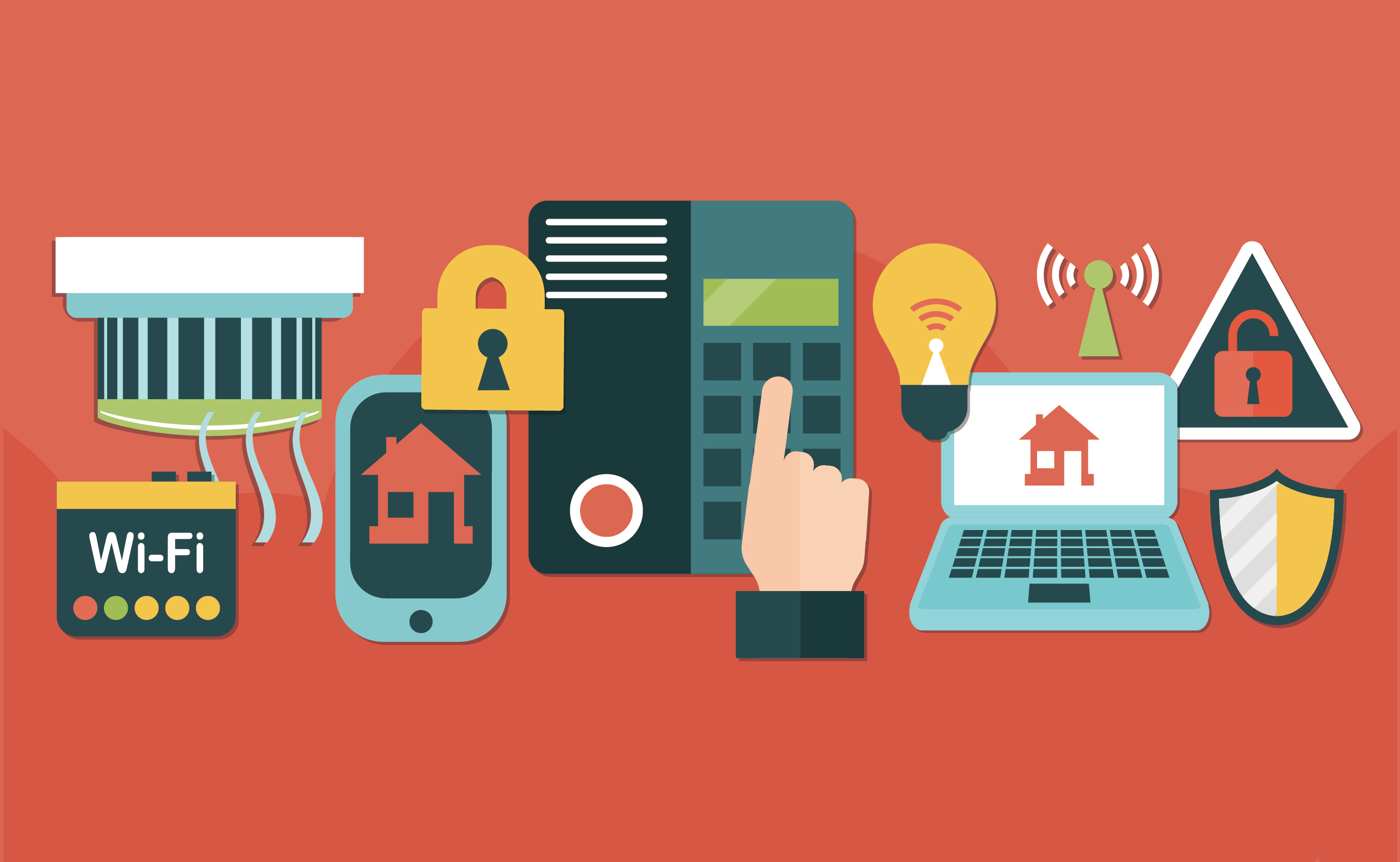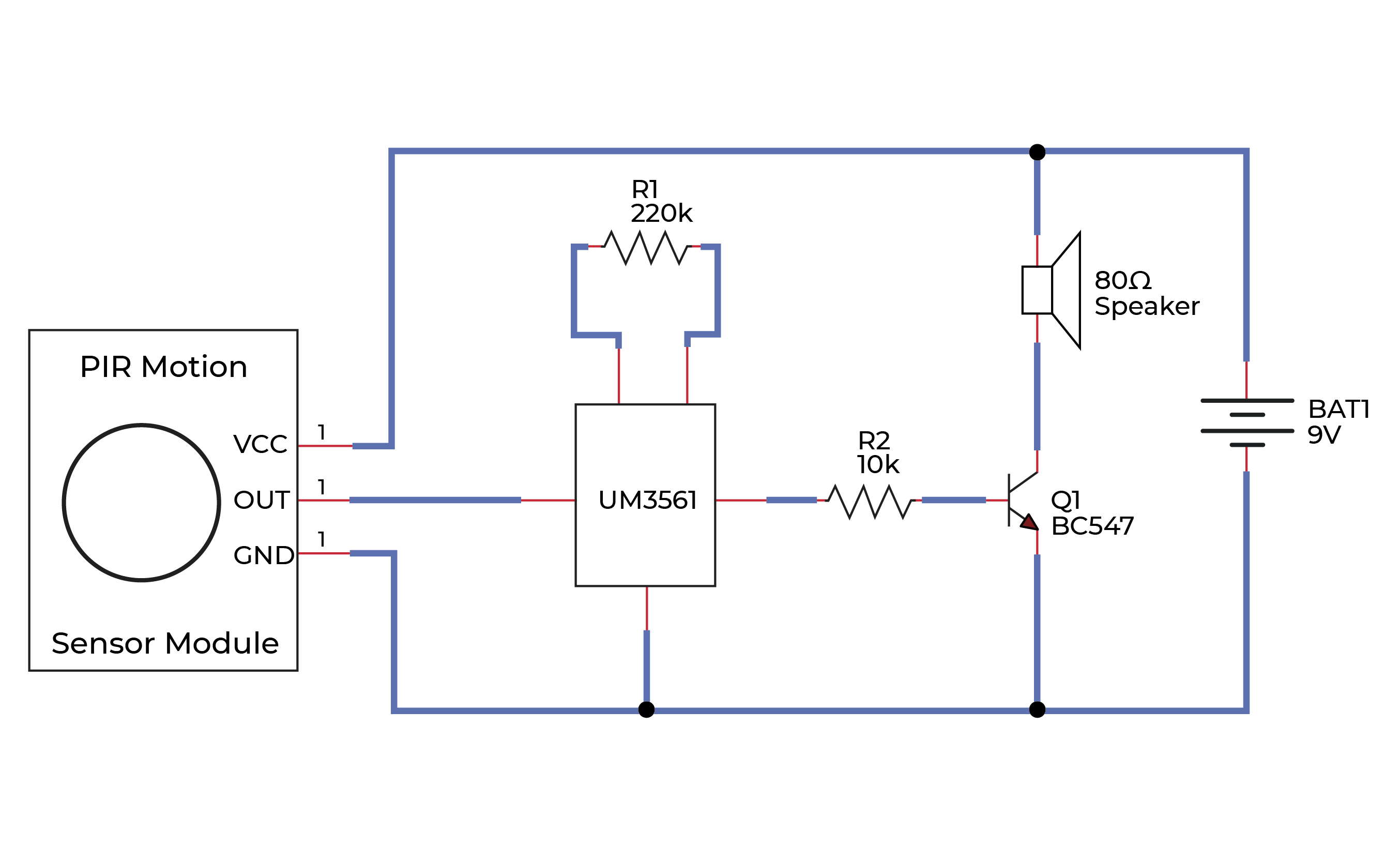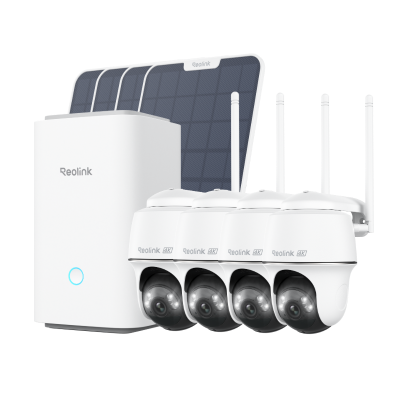Burglar Alarm System Buying and Installation 2025 Guide

Amidst rising concerns about home burglaries and break-ins, investing in a reliable and efficient burglar alarm system has become essential. In this comprehensive article, we’ll delve into everything you need to know about securing your home with a burglar alarm system.
Note: Apart from installing a burglar alarm system, you can use other methods to safeguard your home. Take a look at our recent article featuring 21 effective methods to secure your residence.
- What is a Burglar Alarm System?
- Different Types of Burglar Alarms
- How Does a Burglar Alarm System Work?
- Factors to Consider When Buying a Burglar Alarm System
- How Much Does a Home Burglar Alarm Cost?
- How to Install Burglar Alarm?
- Burglar Alarm Certificates
- Bonus Tip: DIY Burglar Alarm Circuit Diagram Idea
- FAQs
- Conclusion
What is a Burglar Alarm System?
A burglar alarm system is a security system installed in a building or property to detect and prevent unauthorized entry or intrusion. It consists of various components including sensors, control panels, and alarms that work together to detect and notify of potential threats. The primary purpose of a burglar alarm system is to prevent theft, vandalism, or other criminal activities by alerting either occupants or a monitoring station when a breach occurs.
Different Types of Burglar Alarms
Let's explore the various types of burglar alarms that are available.
Hardwired burglar alarm system
Wired alarm systems operate through electric sensors connected to a control panel. Installation requires professional expertise and wiring will need to be concealed, which can result in higher labor costs. However, once installed, these systems offer reliability and durability and require less maintenance than wireless versions.
Wireless burglar alarm system
Wireless burglar alarm systems operate without the need for cables or wires. They consist of a control panel and a set of sensors that are integrated with a wireless transmitter. When the alarm system is activated or triggered, the control panel receives a signal indicating a disturbance.
One notable advantage of wireless burglar alarm systems is their ease of installation. Since there are no cables to run, the installation process is quick and straightforward. This eliminates the need for labor costs associated with extensive wiring. It's important to note that wireless alarm systems rely on batteries for power, and these will occasionally need to be replaced.
Monitored alarm system
A remotely monitored intruder alarm provides a high level of protection and is especially appropriate in major cities or high-crime areas. When activated, it triggers a siren and sends an alert to an external security company. Upon receiving this alert, the monitoring company will first attempt to contact you or your keyholder and request a password to reset the alarm. If they can't reach you or don’t receive the password, they will notify the police.
This option offers reliable and secure 24/7 monitoring, giving you peace of mind even when you're away. However, there is typically an associated fee for this service.
Bells-only (audible) alarm system
Bells-only or audible-only alarms produce a loud noise to deter intruders and alert neighbors. They are suitable for low-risk properties with fewer valuables. However, these unmonitored systems require manual contact with emergency services, and you won't receive automatic alerts.
How Does a Burglar Alarm System Work?
Regardless of the type of burglar alarm system, they all typically operate through a similar series of steps:
-
Sensor activation: The system's sensors, such as motion sensors, photobeam sensors, or magnetic contacts, detect the presence of an intruder by monitoring the designated areas, doors, or windows.
-
Alert to control panel: Once a sensor is triggered, it sends a signal to the control panel. All devices, whether wired or wireless, are connected to this type of central unit.
-
Siren activation: To deter intruders, the system activates a loud siren. Sometimes, external sirens or bells on the building's outer wall notify nearby individuals. Some control panels also have built-in sirens to alert occupants inside.
-
Notification transmission: The system sends notifications to preset reporting addresses via voice calls, emails, SMS messages, or a monitoring center. Smartphone apps can also be used to send and receive these notifications.
Factors to Consider When Buying a Burglar Alarm System
There are several key factors to consider before purchasing a burglar alarm system:
Security needs
Assess your property's vulnerabilities and determine the level of security required. Consider elements such as the size of your property, number of entry points, and existing security measures.
Budget
Determine your budget for the alarm system, including installation and ongoing maintenance costs. It's important to strike a balance between affordability and the desired level of security.
User-friendliness
Look for an alarm system that is easy to operate and understand. Consider factors such as control panel usability, remote access capabilities, and smartphone integration.
Expandability
If you anticipate expanding your property or adding additional security features in the future, choose a system that allows for easy scalability and integration.
Warranty and support
Make sure that the alarm system comes with a warranty and reliable customer support to address any issues that may arise.
How Much Does a Home Burglar Alarm Cost?
Below, we’ve compiled a list of several notable home burglar systems, highlighting some of their standout features and costs.
ADT
ADT is a well-known security company that offers extensive customization options. They provide advanced features such as smart monitoring, fire and carbon monoxide monitoring, and three different service levels (Secure Home, Smart Home, and Video and Smart Home).
The cost of ADT's home security system includes equipment fees and professional monitoring subscription fees. The price of equipment is determined by your specific needs, you can go to the ADT official website to customize your needs to check the cost. And the professional monitoring subscription fee is about $40-60/month.
Vivint
Vivint offers a comprehensive range of home security products that seamlessly integrate into a single app. This allows for complete protection of both your home and car. With full app functionality, the system enables you to schedule automatic locking and unlocking of your doors.
The cost of Vivint system includes equipment fees, a base subscription fee of $44.99/month, extra cloud video storage fees, and a cellular network maintenance fee of $1.48/month. You can go to the official website to customize your needs to check the cost
SimpliSafe
SimpliSafe is a budget-friendly and user-friendly cellular security system that lives up to its name. With affordable monthly monitoring fees, you have the flexibility to start or stop the monitoring service at your convenience. SimpliSafe's home monitoring system is available for a monthly subscription cost ranging from $19.99 to $29.99. Packages range from $250 to $700. You can check the official website to see what kind of packages you need and how much they cost.
Frontpoint
Frontpoint offers top-of-the-line home security with wired and wireless services. It's compatible with iOS and Android and sends informed warnings for real threats. The monthly subscription cost starts from $45. Its equipment purchase range from $325 - $600. Frontpoint is perfect for DIY enthusiasts who value equipment options and features.
Reolink
Reolink offers smart security home gadgets, such as security cameras and video doorbells. You may use these devices to DIY your home system. Other than the equipment fees, Reolink does not charge setup fees or monthly subscription fees. The security camera fees depend on the resolution and advanced features, such as the AI function and alert function. The cheapest camera is $50. As for the video doorbell, its price range from $80-$90.
Note: Reolink recently introduced a new range of wireless security camera systems, such as Home Hub with Argus 4 Pro, Home Hub with Argus PT Ultra. They are easy to install and require no installation fees.
Wireless Security System With 4K PT Standalone Battery/Solar Wi-Fi Cameras
4K Color Footage Day & Night, 1 Year of Local Storage, Exclusive Anti-Theft Algorithms, 360° All-Around Coverage, Expandable System Up to 8 Reolink Cams.
How to Install Burglar Alarm?
Although different brands of burglar alarm systems are on the market, all their basic installation steps are similar. Following are burglar alarm installation steps:
1. Determine the ideal location for the control panel
Choose a location near the primary entry door that’s close to a power source. Secure the panel to the wall using removable double-sided adhesive tape or a small nail. Alternatively, place the control panel on a table or countertop.
2. Position sensors and detectors
Install door sensors and window alarm sensors throughout your home. Use the peel-and-stick method to affix the sensors in appropriate locations. Make sure that the sensors are easily movable if needed.
3. Test the Security System
Consult the security system's owner's manual for specific testing instructions. Follow the provided directions to ensure that all components are functioning correctly. Finally, test each sensor, detector, and the overall system to verify proper operation.
What You Need to Know about Burglar Alarm Certificates?
When buying and installing a burglar alarm system, you may need to know about Burglar Alarm Certificates.
What is a Burglar Alarm Certificate?
An alarm certificate, also known as an alarm permit, grants homeowners or renters permission to install a burglar alarm in their residence. These permits primarily aim to minimize the burden on emergency responders caused by frequent false alarms. False alarms can happen when a home security system is accidentally triggered, whether by a child, a pet, or the homeowner.
Many counties have specific limits, typically ranging from 2 to 5 false alarm calls within a 6-month timeframe. It is advisable to consult your county's website to determine the guidelines applicable to the security system you intend to install.
What’s the use of home security monitoring certificates?
The emergence of DIY security systems, often monitored by homeowners through mobile devices or smart tablets, has led many home insurance providers to discontinue the discounts they previously offered for home insurance. Nevertheless, obtaining a home security certificate from a listed monitoring center can potentially lead to savings of up to 25% on your insurance premiums.
However, some states have stricter requirements than others, resulting in smaller discounts, with some only offering 1.5% off. Still, in some instances, savings on insurance may offset monthly monitoring fees, effectively covering the entire cost of the security.
Bonus Tip: DIY Burglar Alarm Circuit Diagram Idea
If you’re a do-it-yourselfer, here’s a simple diagram for a burglar alarm circuit:
Components of a burglar alarm circuit
- PIR Motion Sensor/1
- IC/1(UM3561)
- 220K Resistors/1, 10k Resistors/1
- Transistor/1
- Speaker/8ohm/1
- Battery/9v
- Breadboard
Burglar alarm circuit

Resource: Burglar Alarm Circuit
How does it work?
The main objective of every burglar alarm is to enhance security. The burglar alarm circuit described here utilizes a PIR (Passive Infrared) sensor in combination with an IC (Integrated Circuit). This combination enables the production of an effective siren at the output. The IC used is the UM3561, which generates four distinct types of sounds: a police siren, a fire brigade siren, a machine-gun sound, and an ambulance siren. When the PIR sensor detects any motion, its output pin is elevated.
This triggers the IC, resulting in activation of the siren through the speaker. The IC requires a transistor to amplify the current that drives the speaker. The speaker continues to produce a continuous siren sound that’s been selected from the IC. The siren’s duration can be adjusted using the Time Delay Control Regulator on the PIR sensor. In some cases, if the PIR sensor operates on AC voltage, a relay is used to control its functioning.
FAQs
1. How to find Burglar Alarm Service near me?
To find a nearby burglar alarm service:
-
Conduct an online search using keywords such as "burglar alarm service near me" or "home security companies in my area."
-
Check local business directories, both online and offline.
-
Seek recommendations from friends, family, or neighbors who have used burglar alarm services.
-
Contact local home security associations or organizations for referrals.
-
Read online reviews and ratings of service providers.
2. What is a car burglar alarm?
Car burglar alarms are security systems designed to protect vehicles from theft or unauthorized access. They include sensors, control units, and remote controls. When sensors detect suspicious activity they trigger the alarm, activating components including loud sirens and flashing lights.
Advanced systems may have immobilizer features, and can send notifications to the owner's mobile device or monitoring service. Car alarms act as visible deterrents, provide early warning against theft, and enhance vehicle security.
3. What’s the difference between a burglar alarm and a security alarm?
Typically, a burglar alarm refers specifically to an alarm system designed to detect and prevent unauthorized entry or break-ins to a property, such as a home or business. It focuses primarily on protecting against burglary or theft-related incidents. Burglar alarms typically consist of sensors, control panels, and alarm components like sirens and strobe lights. Their main purpose is to deter intruders and alert occupants or authorities when a breach is detected.
By contrast, a security alarm encompasses a wider range of threats and risks. It is a comprehensive system that may include components beyond intrusion detection, including fire alarms, smoke detectors, carbon monoxide detectors, and surveillance cameras. Security alarms aim to provide a holistic approach to safeguarding a property, addressing not only burglaries but also other potential hazards and emergencies.
Conclusion
Securing your property with a burglar alarm system is a proactive step towards protecting your loved ones and belongings. In this comprehensive buying and installation guide, we've covered the essentials you need to consider when purchasing and installing a burglar alarm system. From understanding the different types and features that are available to selecting a reputable provider and ensuring proper installation and maintenance, you are now better equipped to make an informed decision.
If you think this article could be helpful to someone you know, please forward it to them. If you have other questions about burglar alarm systems, leave a comment below!
Search
Subscribe for the Latest Updates
Security insights & offers right into your inbox

